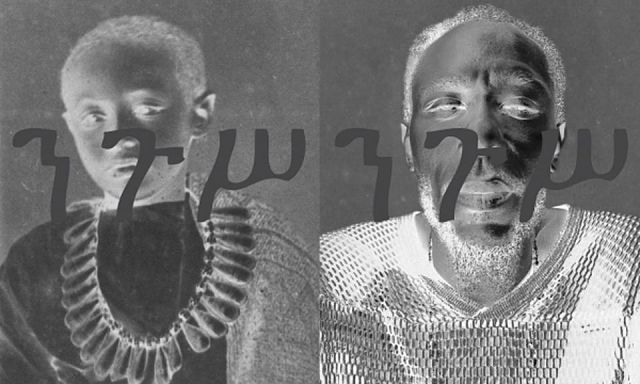 Prince Alämayyähu and yasiin bey (American, born 1973), 2015 THE THIRD LINE
Prince Alämayyähu and yasiin bey (American, born 1973), 2015 THE THIRD LINE
Forbes
Experiencing Yasiin Bey: Negus
I went into yasiin bey: Negus with only the vaguest understanding of the exhibit, which opened in November at the Brooklyn Museum and runs through January 26th. I knew that I had to reserve a ticket in advance and arrive on time, and that I wouldn’t be able to use my phone, for anything, once inside the gallery.
I also knew it was the only way to hear bey’s latest record, Negus, which comprises eight new tracks and original music by the celebrated Ethiopian pianist Emahoy Tsegué-Maryam Guèbrou, a 96-year-old nun. I knew nothing of the visual art in the exhibit, which includes works by bey as well as Ala Ebtekar, Julie Mehretu and José Parlá, or how the listening portion would work.
Out of respect for the artist’s desire to keep the experience real-time, and the music exclusive to the exhibit itself — Negus has not been released in any format, either digital or analog — I thought I’d share only a few observations.
Upon entering the exhibit I was given a pair of headphones in exchange for locking my cellphone inside a small case that I was allowed to keep with me. Soon, gentle piano music filled my personal aural space, and I entered a foyer to the main gallery. On the wall were didactic texts about yasiin bey, the other artists in the exhibit and the word “negus,” which I learned comes from the ancient Semitic Ethiopian language Ge` ez, and means “king” or “ruler.”
For bey, the term applies to all those who have led “noble” lives, but he cites a few in particular: Alämayyähu Tewodros, an Ethiopian prince who committed suicide in 1879, at age 18, after his father was killed and he was sent to be raised in Britain, where he was among very few Ethiopians in the country at that time; Henrietta Lacks, an African-American woman who died of cervical cancer at age 31 and whose biopsies would provide the basis for major advances in cancer research in the mid-20th Century; and the rapper and activist Nipsey Hussle, who was shot to death outside his Marathon Clothing store in South Los Angeles earlier this year.
—
Join the conversation on Twitter and Facebook.

























